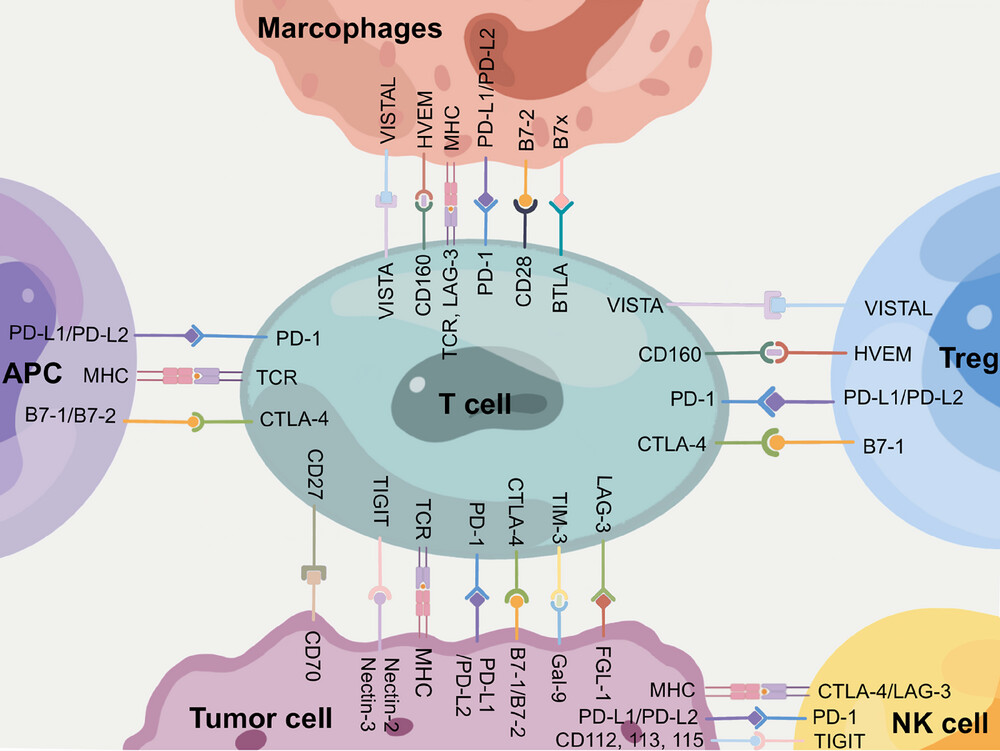Abstract
Immune checkpoints are differentially expressed on various immune cells to regulate immune responses in tumor microenvironment. Tumor cells can activate the immune checkpoint pathway to establish an immunosuppressive tumor microenvironment and inhibit the anti-tumor immune response, which may lead to tumor progression by evading immune surveillance. Interrupting co-inhibitory signaling pathways with immune checkpoint inhibitors (ICIs) could reinvigorate the anti-tumor immune response and promote immune-mediated eradication of tumor cells. As a milestone in tumor treatment, ICIs have been firstly used in solid tumors and subsequently expanded to hematological malignancies, which are in their infancy. Currently, immune checkpoints have been investigated as promising biomarkers and therapeutic targets in hematological malignancies, and novel immune checkpoints, such as signal regulatory protein α (SIRPα) and tumor necrosis factor-alpha-inducible protein 8-like 2 (TIPE2), are constantly being discovered. Numerous ICIs have received clinical approval for clinical application in the treatment of hematological malignancies, especially when used in combination with other strategies, including oncolytic viruses (OVs), neoantigen vaccines, bispecific antibodies (bsAb), bio-nanomaterials, tumor vaccines, and cytokine-induced killer (CIK) cells. Moreover, the proportion of individuals with hematological malignancies benefiting from ICIs remains lower than expected due to multiple mechanisms of drug resistance and immune-related adverse events (irAEs). Close monitoring and appropriate intervention are needed to mitigate irAEs while using ICIs. This review provided a comprehensive overview of immune checkpoints on different immune cells, the latest advances of ICIs and highlighted the clinical applications of immune checkpoints in hematological malignancies, including biomarkers, targets, combination of ICIs with other therapies, mechanisms of resistance to ICIs, and irAEs, which can provide novel insight into the future exploration of ICIs in tumor treatment.

This work is licensed under a Creative Commons Attribution 4.0 International License.

